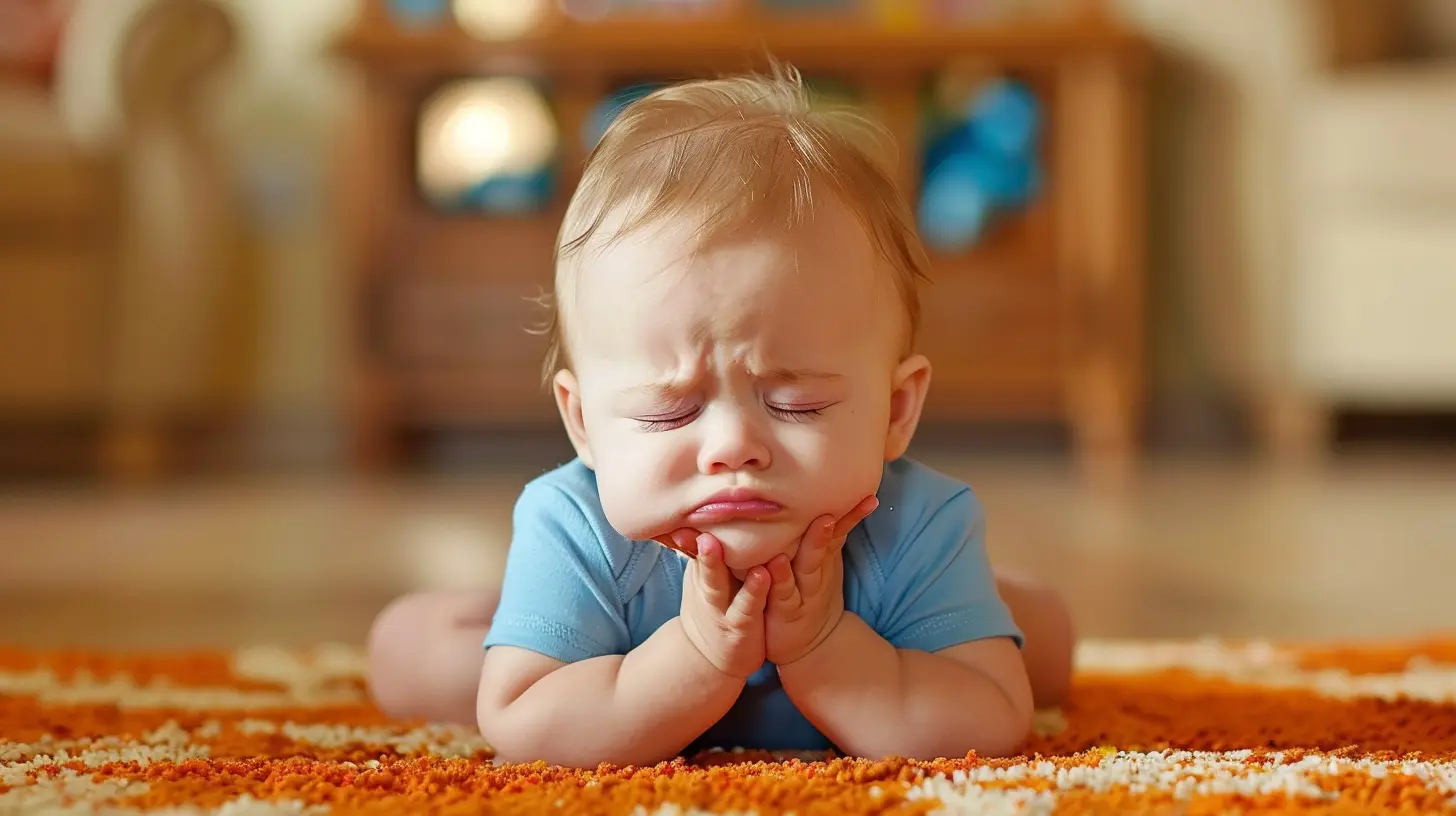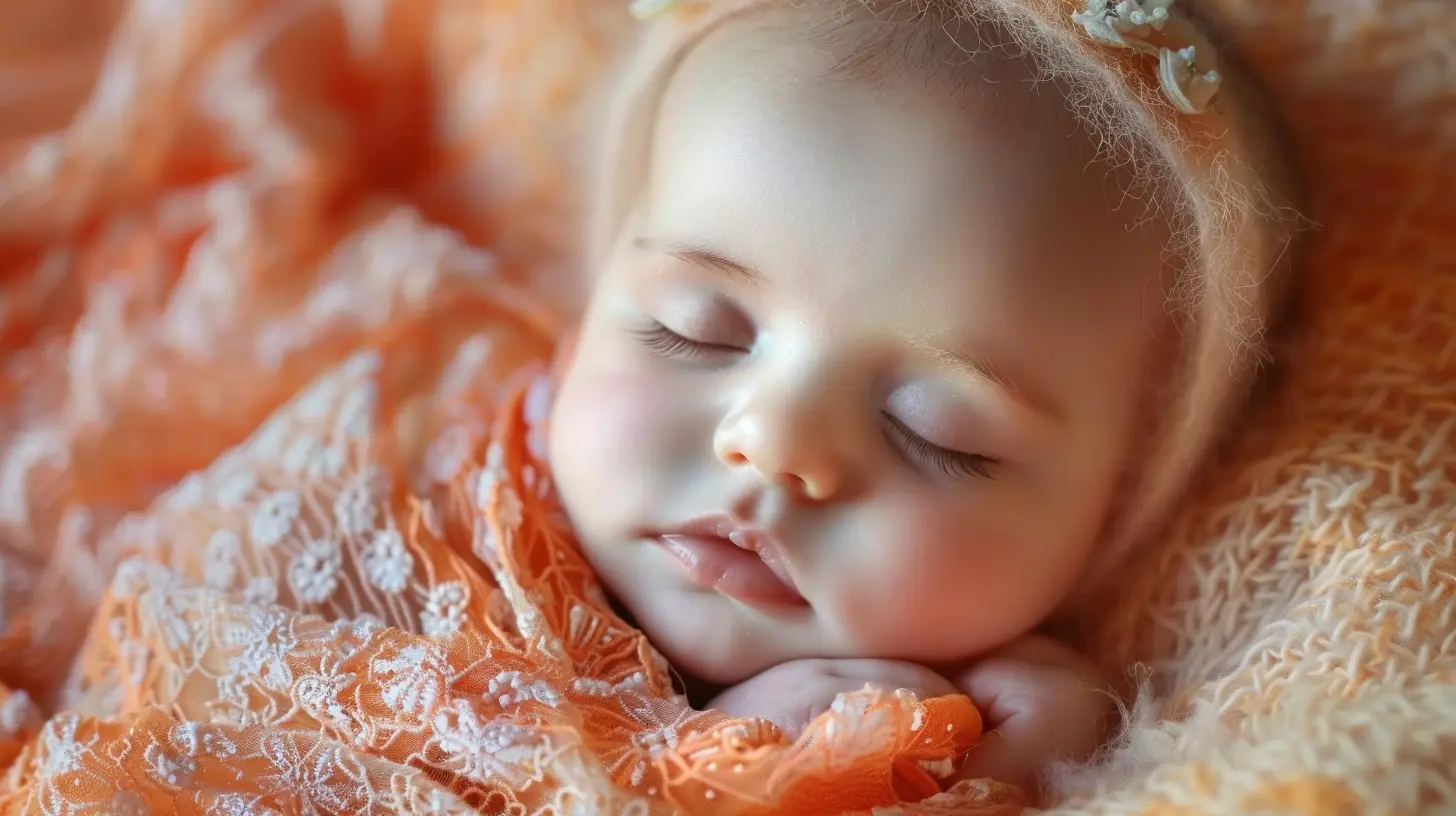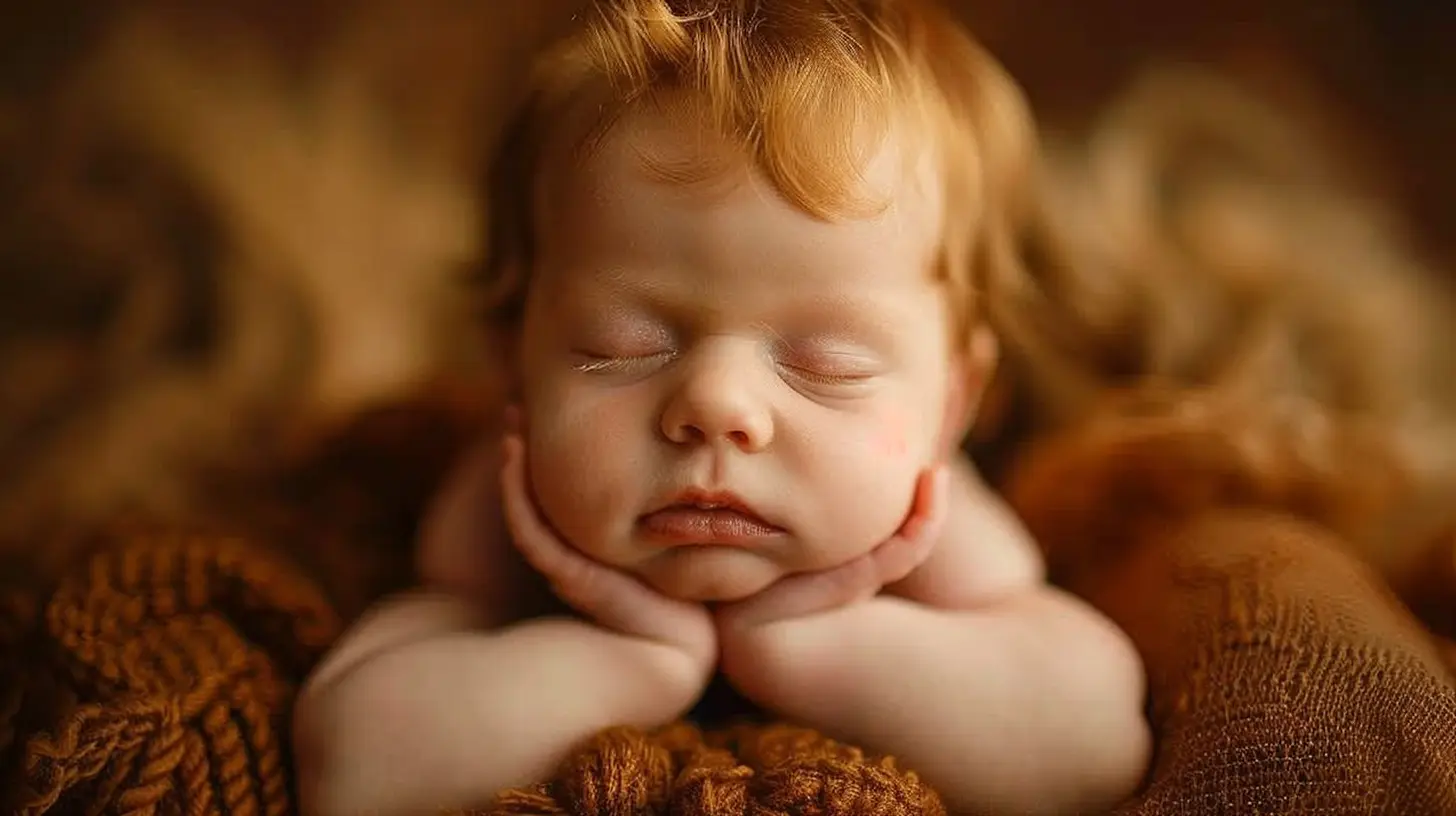How to Spot the Early Signs of Tiredness in Your Baby
3 August 2025
Ever feel like you're playing a never-ending guessing game with your baby? One minute, they're happily cooing, the next they’re crying, arching their back, or fussing for no clear reason. If you’ve ever wondered, “Is my baby hungry? Too hot? Bored? Or just tired?” — you’re not alone. Honestly, we all ask ourselves that at some point, especially during those first few months.
So, let’s take a deep breath and focus on one major baby mood changer: tiredness. Knowing how to spot the early signs of tiredness in your baby is a total game-changer. Catch those signals early, and you’ll avoid the storm that comes with an overtired baby (trust me, it’s real, and it's intense!).
In this article, we’ll dive into those subtle (and not-so-subtle) cues that your little one gives when they're ready for a snooze — before the meltdown hits.

Why Spotting Tiredness Early Is So Important
Okay, let’s talk about the “why” first. Why does catching tired cues early even matter?Well, babies—especially newborns—don’t come with an off switch. Once they pass that sweet spot of sleep-readiness, their little bodies start producing cortisol (the stress hormone), and it actually makes it harder for them to fall asleep and stay asleep.
That’s when you get the overtired baby — red eyes, nonstop crying, and flailing arms like they’re doing interpretive dance. You don’t want to go there.
Getting your baby to sleep before they hit that overtired stage means:
- Easier bedtime routines
- Less crying and fussiness
- Longer, better quality sleep
- A happier baby (and let’s be honest, a happier YOU)
So let’s decode your baby’s sleepy signals like the parenting Sherlock Holmes you were meant to be.

Understanding Your Baby’s Sleep-Wake Cycle
Before you can spot tiredness, it helps to understand how long your baby can actually stay awake.Here’s a rough guide by age:
| Baby's Age | Awake Time Between Naps |
|------------------|--------------------------|
| Newborn (0–8 weeks) | 45 min – 1 hour |
| 2–3 months | 1 – 1.5 hours |
| 4–6 months | 1.5 – 2.5 hours |
| 6–9 months | 2 – 3 hours |
| 9–12 months | 2.5 – 4 hours |
These aren’t strict rules, but they give you an idea of when to start watching for those yawns and eye rubs.
Now let’s get into the real detective work.

The Most Common Early Signs of Tiredness in Babies
1. Staring Into Space
Ever seen your baby suddenly zone out like they’re contemplating life’s deepest questions? That’s not baby philosophy — it’s probably the first sign they’re getting sleepy.When babies start to get tired, they can become less responsive to stimulation. If your baby was being social and active and suddenly becomes quiet and detached, that’s your cue.
2. Slower Movements or Disinterest in Toys
If your baby usually goes gaga for that rattling toy and now couldn’t care less, sleepiness might be to blame. Watch for a sudden drop in energy or enthusiasm. If your baby starts swiping lazily or sluggishly at toys, it could be their way of saying, “Okay, I’m done.”3. Yawning (Of Course!)
This one seems super obvious, but here’s the catch: if your baby is yawning, they’ve already been tired for a little while. One yawn? Time to start wrapping things up. Two or more yawns? You’d better be halfway to the crib already!4. Rubbing Eyes or Face
Much like adults, babies rub their eyes, ears, or faces when they’re getting tired. Some babies might even pull at their ears or fuss with their hair. It's basically their way of trying to soothe themselves.5. Fussiness and Whining
This is where it starts to get tricky. A fussy baby can be tired, hungry, overstimulated — you name it. But if you’ve ruled out food, discomfort, and other obvious culprits? It’s probably time for a nap.A helpful trick: check the clock and their awake time. If it’s been 90 minutes and they’re fussing, they’re likely just ready for sleep.
6. Losing Coordination
If your baby is already sitting, crawling, or pulling to stand, look out for clumsiness or toppling over more often. When tiredness sets in, motor skills take a little nap of their own.7. Clinginess or Neediness
Sleepy babies may suddenly demand to be held non-stop. They may also start clinging onto you with a tighter grip or resting their head on your shoulder — precious, right? It's their natural way of seeking comfort before sleep.8. Change in Facial Expression
Sleepy faces are a little less bright-eyed and bushy-tailed. You might notice:- Glazed or droopy eyes
- Red eyebrows or eyelids
- A blank or "checked out" stare
Babies are expressive (little drama queens and kings honestly), so a shift in their expressions can tell you a lot.

Overtired Baby vs. Sleepy Baby
Here’s where things get real: an overtired baby doesn’t just tell you they’re sleepy — they scream it.Signs of an Overtired Baby:
- Intense crying even when being held or fed- Difficulty calming down
- Short naps or waking up frequently
- Hyperactivity (yes, weirdly enough, some tired kids get wired)
- Clenched fists and jerky movements
Basically, it’s like they’re fighting sleep with every ounce of baby strength they’ve got.
The key is to catch those tired cues before it gets to this level.
Every Baby is Unique (Yep, Even Sleepy Signals)
Here’s the fun twist: every baby has their own “tell” — like a poker player. Some yawn five minutes before a meltdown, while others might just get super quiet or squint a lot.It’s all about tuning into your baby’s specific behaviors. Keep a journal for a few days. Log when they nap, how long they were awake beforehand, and how they acted right before falling asleep. Patterns will start forming — promise!
How to Respond to Early Tiredness Cues
Alright, so you’ve spotted a yawn, a stare, or some eye-rubbing. What now?Step 1: Slow It Down
Start dimming the lights, lowering noise, and transitioning to a calmer activity. Maybe a cuddle, a lullaby, or a quiet walk around the room.Step 2: Stick to a Pre-Nap Routine
Just like a bedtime routine, having a mini nap routine helps signal to your baby that it’s time to sleep. Keep it simple:- Diaper change
- Sleep sack or swaddle
- Short lullaby
- Cuddle or rocking if needed
Step 3: Get Them Down Before They’re Fully Asleep
Yes, even newborns can start learning to fall asleep on their own. If you place them in their crib drowsy but awake, it lays the groundwork for good sleep habits later. Not always easy, but worth the effort.What if You Miss the Window?
It happens — no shame in that. Sometimes errands run late, or you don’t realize they’re tired until they go full meltdown-mode.If you’re dealing with an overtired baby, try:
- Gentle rocking or bouncing
- White noise to help them settle
- Holding them skin-to-skin (especially for newborns)
- Feeding if it helps them relax
Just go back to basics: comfort, calm, and love. Eventually, they’ll give in to sleep (even if it doesn’t feel like it in the moment).
Teaching Others to Recognize Sleep Signs
If you have family members, babysitters, or daycare providers helping with your baby, make sure they know what to look for too.Create a simple cheat sheet with:
- Baby’s typical awake time
- Common tired signs (specific to your baby)
- Quick tips for soothing and nap routines
This ensures consistency and can make your baby feel more secure — wherever they are.
When Things Just Don’t Add Up
Sometimes tired cues can be mixed up with other issues — like illness, teething, or growth spurts. If your baby’s behavior changes significantly, naps are off for days, or they seem uncomfortable, it’s always a good idea to check in with the pediatrician.Trust your instincts. You're the expert on your baby.
Final Thoughts
Spotting the early signs of tiredness in your baby is one of those parenting superpowers you develop over time. It’s like learning a new language — except it’s made up of yawns, blank stares, and face rubs.Once you get the hang of reading your baby’s sleepy cues, naps and bedtime become easier, and meltdowns happen less often. You start to feel more confident, your baby gets better sleep, and everyone in the house wins.
Just remember — be patient with yourself. There will be missed signs and overtired days. But you’re doing a great job, and your baby knows you're trying.
Now go rock that nap schedule like the baby whisperer you’re becoming.
all images in this post were generated using AI tools
Category:
Baby SleepAuthor:

Kelly Snow
Discussion
rate this article
1 comments
Melissa McGovern
What insightful tips! I’m eager to learn how to better recognize and respond to my baby's tiredness cues.
August 10, 2025 at 4:22 PM

Kelly Snow
Thank you! I'm glad you found the tips helpful. Recognizing those cues can make a big difference in your baby's comfort!


